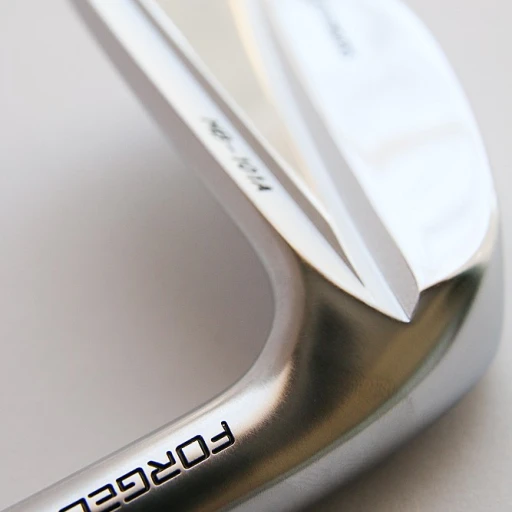
Understanding the Basics of Golf Grips
Grasping the Fundamentals of Golf Grips
In the world of golf, the grip is your first point of contact with the club, making it a fundamental aspect of your game. Whether you're a seasoned pro or a weekend enthusiast, understanding the basics of golf grips is essential for improving your performance on the course. The grip serves as the foundation for your swing, influencing the trajectory and accuracy of your shots. There are three primary types of grips: the overlapping grip, the interlocking grip, and the ten-finger grip. Each offers unique benefits and suits different playing styles. The overlapping grip, also known as the Vardon grip, is favored by many professionals for its balance of control and power. Meanwhile, the interlocking grip is often preferred by players with smaller hands, providing a secure hold. The ten-finger grip, or baseball grip, offers maximum leverage and is particularly popular among beginners. As you explore the nuances of golf grips, it's important to remember that the right grip for you depends on your personal comfort and the specific demands of your game. This foundational knowledge will set the stage for understanding the power of a strong golf grip, which we will delve into next. Additionally, knowing when a weak grip might be advantageous can be a game-changer in certain situations. To further refine your skills, consider how adjusting your grip can impact different shots. For those looking to master the art of the perfect fairway shot, exploring the 5-wood loft can offer valuable insights into grip adjustments. Stay tuned as we continue this journey into the intricacies of golf grips, helping you elevate your game to new heights.The Power of a Strong Golf Grip
The Vital Role of Grip Strength in Your Game
Establishing a robust golf grip can hold the key to unlocking a more consistent and powerful swing. The pressure applied in your grip determines how the clubface strikes the ball and significantly impacts your shot's trajectory and control. As you progress in mastering your grip, you'll notice the tangible improvements in your overall game performance. For those aiming to refine their swing, a potent grip offers the benefit of stability and precise clubface alignment. When you possess a strong grip, your hands naturally supinate better through impact, ensuring that your shots are both powerful and accurate. This enhanced control is particularly beneficial when dealing with longer shots, like driving off the tee, where consistency is crucial. You might also want to explore effective driver techniques to complement your grip by checking out how to swing a driver.Benefits of a Strong Grip in Specific Situations
While mastering the fundamentals of a powerful grip, it’s essential to acknowledge the scenarios where it excels. For instance, in windy conditions, where ball flight control is vital, having a firm grip ensures a lower trajectory shot, giving you an edge over the elements. Similarly, stronger grips naturally aid in generating a slight draw shot, enhancing distance and accuracy. Yet, as discussed previously, adjusting your grip according to your desired shot plays a significant role in strategy and execution. Although a strong grip might be advantageous in numerous situations, understanding when to opt for a weaker or neutral grip, as covered elsewhere, can also contribute to a well-rounded approach to your golfing strategy, ensuring you’re prepared for any challenge on the course.When a Weak Grip Might Be Better
Understanding When a Lighter Touch Can Be Beneficial
In the nuanced world of golf, there are moments when opting for a less dominant grip can actually enhance your performance. While earlier sections have dived into the intricacies of gaining strength and power through a more pronounced grip, a lighter hold can help finesse your precision with certain shots. A weaker grip can be particularly advantageous when you're aiming to achieve a fade or subtle-draw shot. This is because a softer grip generally allows for more wrist action, which can influence the clubface angle at impact, providing that desired gentle curve. It's important to remember that golf is a game of variability and adaptation, meaning that while mastering the powerful grip has its merits, so does understanding when to gracefully ease up. Furthermore, environmental factors such as weather can also sway your grip choice. In particularly windy conditions, a weaker grip might afford you greater control, letting you adjust more adeptly to unpredictable elements. It's all about balancing power with precision, a task easier said than done but greatly rewarding once achieved. Even experienced golfers, like the renowned Bryson DeChambeau, sometimes opt for alternative gripping techniques to refine their game. To delve deeper into how professional golfers manipulate their grips for peak performance, check out this insightful read on the secret behind his putting success here. As you continue to explore and refine your grip, remember that experimentation and practice are key when finding what works best for different scenarios on the course. A skilled golfer knows when to tighten the reins and when to let them go gently.Neutral Grip: The Middle Ground
Finding the Balance with Neutral Grips
In the intricate world of golf grips, the neutral grip often gets overshadowed by its stronger and weaker counterparts. Yet, it stands proudly as a versatile and balanced option, offering a harmonious blend of power and control. Unlike the commanding nature of a strong grip, which we've explored previously, the neutral grip centers itself as an adaptable solution for a wide range of golfers. Adopting a neutral grip involves positioning your hands in such a way that the V formed by your thumbs and index fingers points towards your chin. This approach can streamline your swing path, promoting a more natural club face alignment at impact. As a result, golfers often experience improved consistency in their shots, a crucial factor in reducing erratic ball flights. Why might you choose a neutral grip? Imagine a scenario where you want to maintain the flexibility and precision of shot selection, particularly when tackling varied terrains and conditions. A neutral grip can act as an intermediary option, allowing you to pivot slightly to accommodate slight adjustments without the drastic effects seen with stronger or weaker grips. For those transitioning between grip styles or seeking to refine their swing control with finesse, experimenting with a neutral grip may be your gateway to mastering an adaptable golf strategy. Whether integrating it with fairway shots or in conjunction with other techniques, the neutral grip serves as a reliable anchor, perfectly complementing your evolving golf experience.Adjusting Your Grip for Different Shots
Fine-Tuning Your Grip for Varied Shots
A strong golf grip certainly provides powerful control and stability, as we’ve seen, but it’s essential to recognize that not all shots will benefit from the same grip strength. The ability to adjust your grip according to the specific demands of each type of shot can truly elevate your golf game and ensure accuracy in all situations.











-large-teaser.webp)

